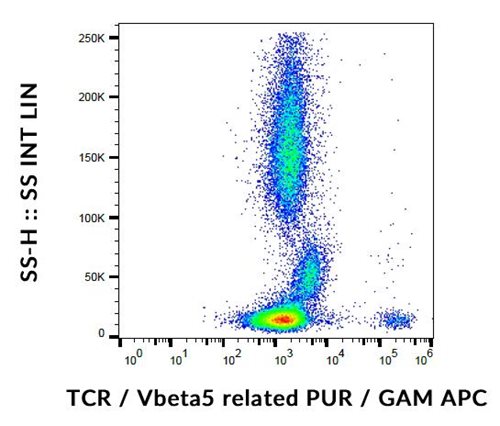Recombinant Human CD44/MIC4 (C-6His)(Discontinued)
Shipping Info:
For estimated delivery dates, please contact us at [email protected]
| Amount : | 50 µg |
| Content : | Lyophilized from a 0.2 µm filtered solution of 20mM PB, 150mM NaCl, pH 7.2. |
| Storage condition : | Lyophilized protein should be stored at -20°C, though stable at room temperature for 3 weeks. Reconstituted protein solution can be stored at 4-7°C for 2-7 days. Aliquots of reconstituted samples are stable at -20°C for 3 months. |
| AA sequence : | QIDLNITCRFAGVFHVEKNGRYSISRTEAADLCKAFNSTLPTMAQMEKALSIGFETCRYGFIEGHVVIPRIHPNSICAANNTGVYILTSNTSQYDTYCFNASAPPEEDCTSVTDLPNAFDGPITITIVNRDGTRYVQKGEYRTNPEDIYPSNPTDDDVSSGSSSERSSTSGGYIFYTFSTVHPIPDEDSPWITDSTDRIPVDHHHHHH |
Source: Human Cells.
MW :23.1kD.
Recombinant Human CD44 is produced by our Mammalian expression system and the target gene encoding Gln21-Pro220 is expressed with a 6His tag at the C-terminus. CD44 is a cell-surface receptor for hyaluronic acid and also interacts with other ligands, such as osteopontin, collagens, and matrix metalloproteinases. A large number of CD44 isoforms can be generated by the insertion of different combinations of at least nine exons. Increased CD44 antigen is associated with relapses in non-small cell lung cancers. Furthermore, an increasing quantity of evidence suggests that CD44 has various functions related to inflammatory disease. CD44 deficiency induces severe liver injury. CD44-hyaluronate mediates in lymphocyte T and monocyte adhesion to the endothelium, stimulates proinflammatory cytokine release from macrophages and participates in dedifferentiation phenotype of smooth muscle cells from contractile state to synthetic one.
MW :23.1kD.
Recombinant Human CD44 is produced by our Mammalian expression system and the target gene encoding Gln21-Pro220 is expressed with a 6His tag at the C-terminus. CD44 is a cell-surface receptor for hyaluronic acid and also interacts with other ligands, such as osteopontin, collagens, and matrix metalloproteinases. A large number of CD44 isoforms can be generated by the insertion of different combinations of at least nine exons. Increased CD44 antigen is associated with relapses in non-small cell lung cancers. Furthermore, an increasing quantity of evidence suggests that CD44 has various functions related to inflammatory disease. CD44 deficiency induces severe liver injury. CD44-hyaluronate mediates in lymphocyte T and monocyte adhesion to the endothelium, stimulates proinflammatory cytokine release from macrophages and participates in dedifferentiation phenotype of smooth muscle cells from contractile state to synthetic one.
Always centrifuge tubes before opening. Do not mix by vortex or pipetting. It is not recommended to reconstitute to a concentration less than 100 µg/ml. Dissolve the lyophilized protein in ddH2O. Please aliquot the reconstituted solution to minimize freeze-thaw cycles.
Endotoxin : Less than 0.1 ng/µg (1 IEU/µg) as determined by LAL test.
For Research Use Only. Not for use in diagnostic/therapeutics procedures.
| Subcellular location: | Cell membrane, Cell projection |
| Post transnational modification: | Phosphorylated; activation of PKC results in the dephosphorylation of Ser-706 (constitutive phosphorylation site), and the phosphorylation of Ser-672. |
| Tissue Specificity: | Isoform 10 (epithelial isoform) is expressed by cells of epithelium and highly expressed by carcinomas. Expression is repressed in neuroblastoma cells. |
| BioGrid: | 107398. 132 interactions. |
|
There are currently no product reviews
|
















.png)








